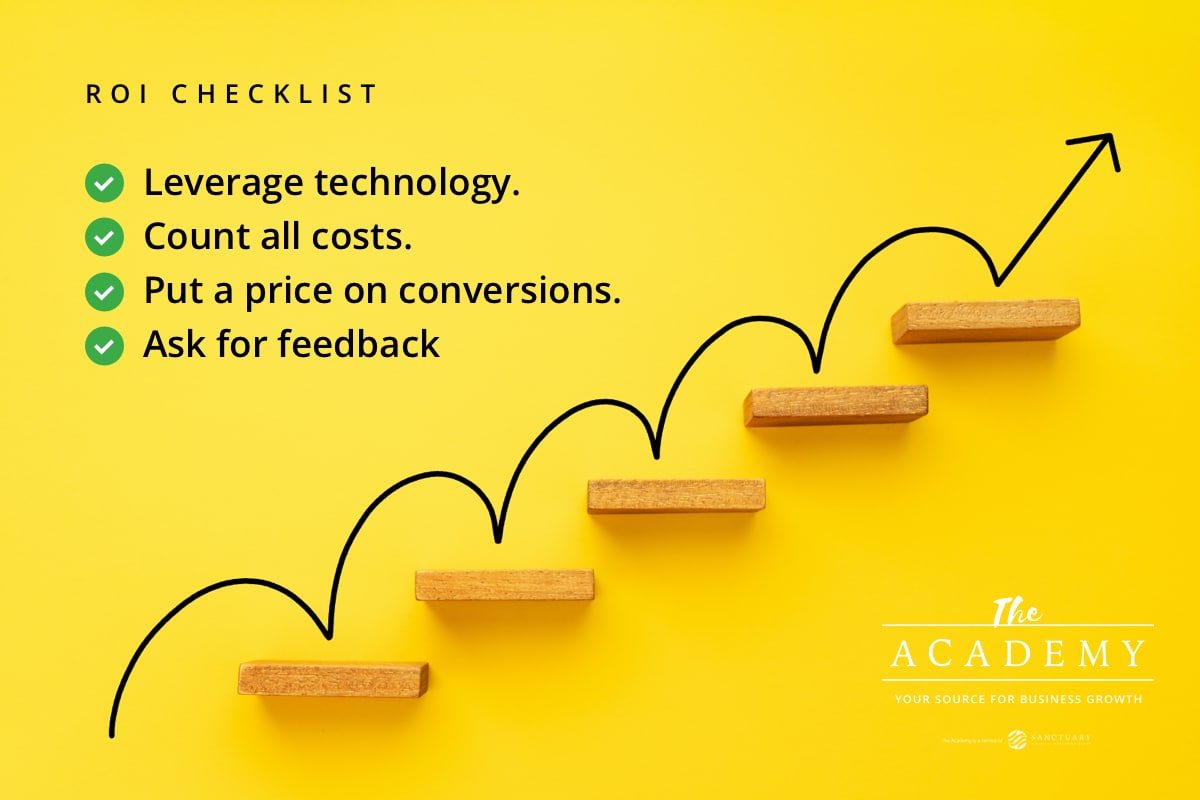
In the modern digital age, content marketing is among the leading ways to bring new customers and clients into your organization. That’s not a secret, and you probably have a content strategy and schedule in place for your business currently.
But do you know how well that content marketing plan is working? Maybe not. Plenty of businesses struggle to accurately track their return on investment when it comes to content marketing. It can be tricky to measure how much revenue your content is contributing to the bottom line, so you might make some mistakes and wind up with incorrect data. Or, worse yet, you might not even bother trying to figure out how your content is performing from a financial perspective.
We’d like to use this article to help you take a big step forward in terms of measuring content marketing ROI. This task might not be as straightforward as measuring some of your other revenue streams, but that doesn’t mean you should give up. The information below should help you put together a plan that will lead to data you can trust.
Why Content Marketing ROI Matters
If you have any doubt that it’s even worth your time to track ROI in this area, we can put that thought to rest right away. Not only is it worth your time, but we would argue that it’s essential. Knowing how much money you are making as compared to how much you are spending is the only way to make an informed decision about your future marketing efforts.
Imagine a scenario where you are spending the same amount of money on each of three different types of marketing. Perhaps you are running radio ads for your business, actively using social media to attempt to build an audience, and publishing content to your blog. If each of these is getting the same amount of resources, they should all be leading to the same amount of revenue. But is that what is actually happening?
Maybe not. Perhaps the content of your blog is driving 50% or more of your revenue from new customers, while it’s only getting 33% of the spending in this area. That would be an obvious sign to invest more aggressively in content while taking away from the channels that aren’t performing as well. Of course, you can only make this decision if you know how much revenue is coming from content in the first place, which is why you simply must do your best to accurately track this metric.
The Math is Simple
While it isn’t always easy to calculate content marketing ROI — an issue we’ll get into more carefully in a moment — it is easy to do the math once you get the numbers sorted out. Your return on investment for content marketing is simply how much money you spend on content marketing compared to how much money that spending brings you in return. If you spend more than you make, you are underwater for this venture, and you’ll want to look at making some changes. If, on the other hand, you are making more than you spend, you are doing well and will want to consider investing further.
For instance, if you make $150 for every $100 in content marketing spend, you would have an ROI of 50%.

Knowing that the math is easy, your primary challenge is going to be determining an accurate amount for each of the two numbers in the equation – expenses and revenue. If you have proper accounting systems in place for your business, you should have the “raw material” you need for getting these numbers, but there are many complicating factors that will throw you off the trail if you aren’t careful. That’s the topic at hand for the next section.
Why Is It So Hard to Calculate Content Marketing ROI?
It’s hard to get a clear view of content marketing ROI because the picture is always at least a little bit cloudy. If these numbers were sitting at the bottom of a pond, for example, you wouldn’t be looking through crystal clear water – you’d be looking through muddy water that had just been stirred up by a passing boat. It’s difficult to get a good look at the information you need, but that doesn’t mean it’s impossible.
The inherent problem is that spending and revenue rarely occur in isolation. For instance, if you have a person on staff that is charged with both creating content for the blog and managing social media accounts, how do you split those out and accurately assign a cost to just the blog creation? There is going to be some overlap in your spending, so it’s not always easy to just go through your accounting records and assign each expense to one category or another.
Likewise, the story is much the same with revenues. If someone finds your brand initially through your blog, and then later makes a purchase, that revenue should be tied to your content marketing efforts – but do you have the technology in place to assign credit correctly? The inverse can also be true, as perhaps someone heard of you first via the radio, then later read your blog as a result, and then finally made a purchase. Where does the credit go for the revenue that such a customer brings to the company?
It might seem like these are questions that simply can’t be answered, but that’s not the case. As you’ll see in our next section, there are strategies that you can use to get around some of these issues and come away with numbers you can trust. The ROI calculations you do for content marketing might never be as concrete as they are in other parts of your business, but with enough effort, you can still use this data to make confident choices.
Use These Tactics
With the stage fully set, let’s dive into some tactics you can employ to build a system that will give you a clear picture of what kind of ROI your business is getting from content marketing endeavors.

Leverage technology.
By far, the best thing you can do to nail down these numbers as accurately as possible is to use advanced technologies to track where your leads come from and how many of those leads turn into buyers. As a starting point, you can take the time to properly construct your goals and events in Google Analytics. Knowing where someone first landed on your site, and then knowing where else they went and what they did during that visit, is extremely valuable. For example, imagine someone finds a post on your blog that shows up in the organic search results. This is classic content marketing, and it brings a new visitor to your site who could potentially turn into a customer. Seeing that this person’s first interaction with your site was on a blog post, you can safely categorize this visitor as a product of content marketing. Then, if that person goes on to make a purchase, the revenue from that event should be credited to your content marketing initiatives. There are many other situations to account for, but you get the idea – use available tools to track the customer journey and use that information to direct revenue into the appropriate buckets.
Count all costs.
It’s actually quite easy to make your content marketing look better than it is simply by not accounting for all of the costs that go into your content. You’ll certainly include the cost of paying someone to write your blog posts, but what about the purchase of images to include in those posts? Or maybe the design work that needs to be done to get the blogs ready to publish? Are you paying for any ads to drive traffic to your blog content? There are tons of different ways for content costs to rise, so pay close attention to the content production process and don’t leave anything out. There tends to be a lot of attention paid to tracking down revenue attribution, but having a clear picture of your spending is just as important.
Put a price on conversions.
When a conversion is an actual sale – a customer making a purchase from your company – it’s easy to figure out how much that conversion was worth. You take the sale price of the item, subtract the cost of goods sold, and you have the value of the transaction. But not everything that you count as a conversion is going to be an actual sale. Sometimes, a conversion will simply mean you convinced a visitor to sign up for your email list, or to request more information about one of your products. Those types of conversions also need to be valued so you can then incorporate that information into your content marketing ROI calculations. As an example, let’s say you already know that 10% of your email subscribers turn into paying customers. And, your average paying customer is worth a lifetime value of $100 to your business (to keep the math easy). Those numbers mean that each new email subscriber is worth $10, so any subscribers who come to your business through content marketing should be valued at $10 for the purposes of figuring out content marketing ROI. You can similarly attach a default value to all of the various types of conversions and you’ll be a big step closer to solving this puzzle.
Ask for feedback.
If you are running into dead ends with some of the more advanced, high-tech solutions, you might also consider simply asking customers how they found you. If you run a simple survey that includes a question about how people first came into contact with your brand, you can gather some surprisingly reliable information. Of course, not everyone is going to respond to your survey, but you can use the responses as a representative sample of your overall customer base. So, if 25% of respondents say they found you through content marketing, you can likely assume that the overall number for your entire customer base is similar to that 25% mark. This will help you understand how much of your business is driven by content marketing and how much money you should be willing to spend in this area.
It’s easy to be overwhelmed by the thought of trying to figure out how much revenue is being driven by your investment in content marketing. Armed with the information above, however, you should now have what it comes to overcome that challenge and put a system in place to monitor your content marketing ROI moving forward. Knowing exactly what you are making from content marketing will help you decide how much to invest in content as compared to other marketing channels. Thank you for visiting and we wish you the best of luck in this venture!
Most Popular Articles

Seeing Favicons in Your Google Search Results? Here’s Why…
Have you noticed anything different in your Google Search results lately? Google added tiny favicon icons to its organic search results in January. It was…

Business Growth and Digital Marketing News & Tips 4-14-24
Did you know? It’s five to twenty-five times more expensive to acquire a new customer than to retain an existing one. Increasing customer retention by…

Business Growth and Digital Marketing News & Tips 3-28-24
With the desire for precise measurement tools to determine ROI, there has been a rise in attention metrics. These metrics, which often utilize eye-tracking data,…








